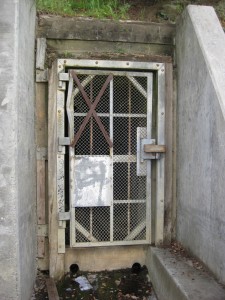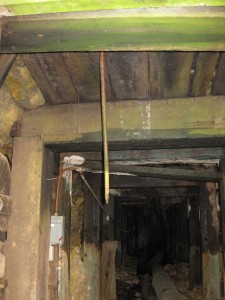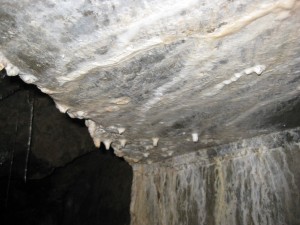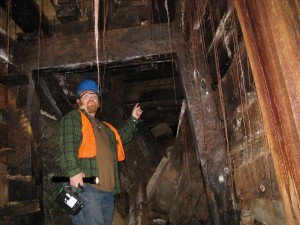There’s nothing quite like the end of the month, which is always paperwork crunch time, for new and interesting opportunities to crop up. Despite knowing the certain long hours they will demand in make up time, you just can’t…say…no. Two of those happened this week, I got to enter into UC Berkeley’s Lawson Adit (definition: an adit is the entrance to nearly horizontal mine) and I got to give a crash course in radiation detection using bomb squad robots to the local police departments (this part of the adventure may be found in Part 2).

First, the questions everyone asks: why does UC Berkeley have a mine and how long has it been there?
Before UC Berkeley had a Department of Civil and Environmental Engineering, it was known as the School of Mines and operated out of what is now known as Hearst Memorial Mining Building. Created by a grant by Pheobe Hearst in 1902 from the vast wealth her husband George had realized during the various gold and silver strikes during the late 1800s, Pheobe Hearst wanted to try to educate a new generation of competent mining engineers in George’s memory to work all the vermiculated placer bearing lands of the American West, rather than drag them over from the east coast or depend upon finding them among the flood of immigrants from Europe.
In 1918, it was decided that they’d have students dig & blast a mine in the hard rock of the hills behind the Hearst Memorial Mining Building. The result was the Lawson Adit. Upon discovery of the Hayward Fault running through there, they decided to dig that mine juuuuuust a little bit deeper so that they could actually cross the fault. You know, because it was there…in the name of Science…for More Awesome. Also, it had a special side gallery that was just for storing the student dynamite. Education used to be much more hands on and exciting once upon a time.
By the late 1950s, the excitement for mining had died down and having a mine bisected by an active (and often creeping) fault seemed a Bad Idea. There were numerous collapses in the adit, primarily where the fault crossed, that made the mine too dangerous to work with anymore. The decision was made to seal it up and then, several years later, seal it up much more thoroughly to prevent the homeless from camping in it and frat boys from getting up to shenanigans.

My entry was done in the interest of making sure that no one had done anything silly and tried to store/discard radioactive materials down there. It was unlikely, but I have made a career for myself in having a very dim view of the common sense and forward thinking of others and I thought it prudent to check, just in case. The first thing you see on entry into the adit is a giant goddamn spike hanging down from the ceiling, as shown in the picture to the right.
No, I don’t know why it was put there but it is definitely very educational. Unless you’re shorter than 4 foot tall, you probably only get to learn the “Wear A Hardhat In A Mine” lesson once from this spike.

Rockfalls litter the floor and have dammed up the trickling groundwater, so it is a soggy stroll in the tunnel. Roots hang down from above, with that awful hairy appearance they have for sucking water from dank, moist air. Of course, where you have groundwater seeping through limestone, you get cave formations. This may be a man-made cave, but the natural processes are still going, trying to make some new stalactites on the concrete reinforcing of the side cut entry.

At the end of the tunnel, is the collapse that indicates where the Hayward Fault crosses. Lest a rather large hunk of limestone drop and make My Lovely Assistant get very upset with my corpse, I didn’t actually scramble over the debris pile to poke the fault fracture proper.
With the tunnel cleared for radioactive materials and nothing found, they can now do installation of new seismographs before they lock it down good and tight for the foreseeable future.
Next time: Herr Direktor Funranium puts the UC and Berkeley PD bomb squads, and their robots, through their paces.